Game Concept
Concept in Brief
RGB Rumble (working title) is (or will be) a fast-paced multiplayer game where players chase each other down based on a rapidly changing game of rock-paper-scissors.
In RGB Rumble, the player(s) will:
- Hunt down nodes scattered around the level to change to an advantageous colour where colour is everything
- Face off in hectic multiplayer with 2-4 players
- Make use of numerous power-ups to shake up the course of a match
Concept Development
RGB Rumble is a rewrite of one of my earlier projects from years gone by. Though I had some desire to have finish the original incarnation, its styling and overall setup left much to be desired.
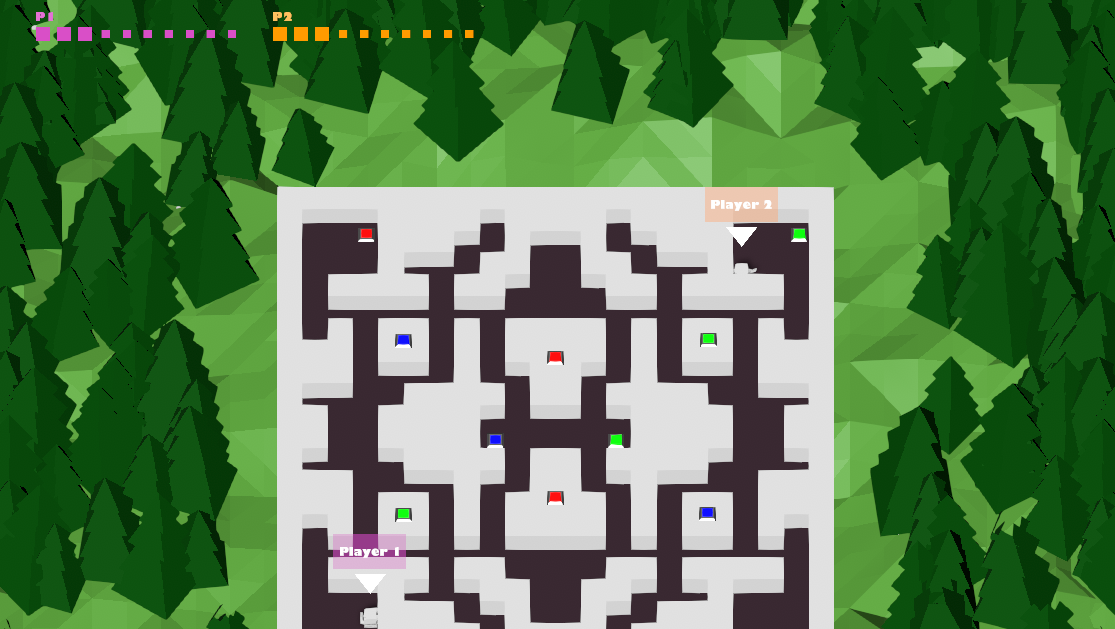
Eventually, I grew tired of working on the game's original 3D incarnation, but the idea stuck with me, which is why I'm giving it another shot today in an entirely different style.
Both RGB Rumble and its unnamed predecessor take inspiration from the Flash games of yore, such as those from popular publisher Nitrome (Bad Ice-Cream and Twin Shot, for instance) with their often hectic and think-on-your-feet play styles. One such comparison was brought up frequently when I showed the original game to my peers, which was to the very pervasive Tank Trouble.
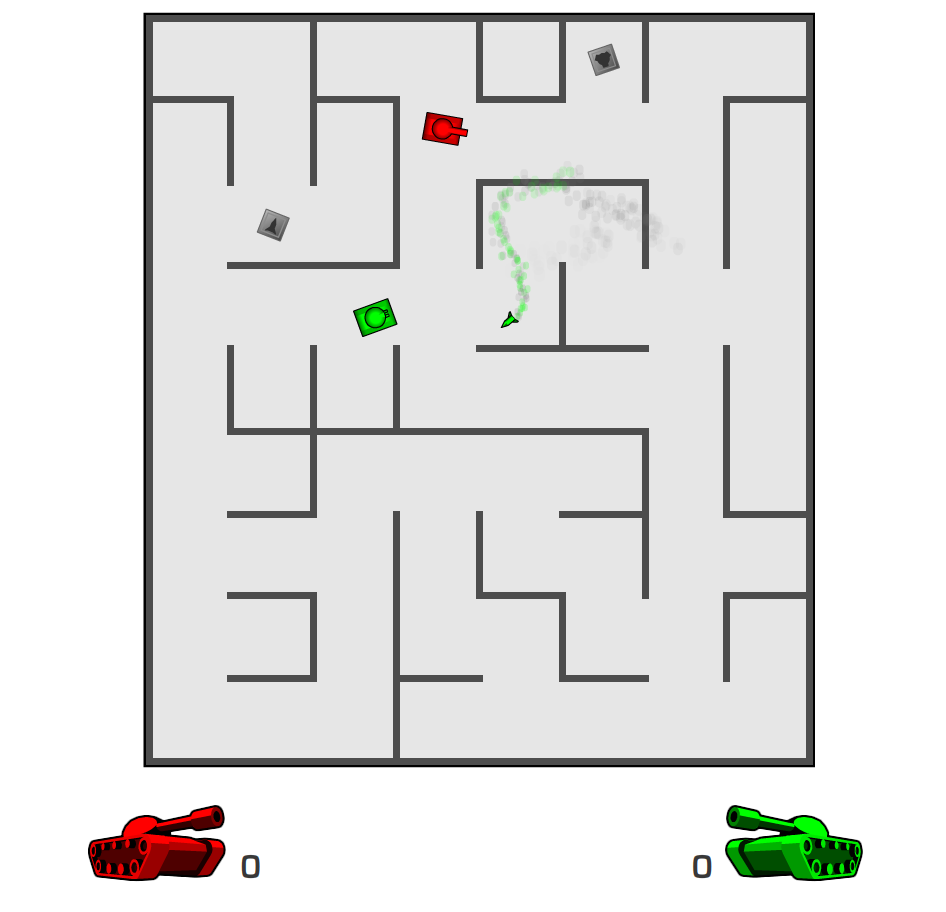
The original game controlled similarly to Tank Trouble and featured a similar maze-like level layout, so it's possible it was a main influence on the prototype, though I can't recall for sure. Regardless, I noticed that players of the original game would often get into a standstill with one player by a different colour node waiting for the other to make the first move. I intend to resolve it and similar issues in RGB Rumble by introducing variation in Tank Trouble inspired power-ups which, like those in the aforementioned game, drop randomly across the level every few seconds.
Audience
RGB Rumble has elements of various genres, especially since video game genres can be defined by play style, purpose, or content, and since many genres have countless sub-genres. I've narrowed down the game to three genres: casual, party and arcade.
RGB Rumble could be classed as a casual game because by design it will be easy to pick up and put down and also played in short bursts. On the other hand, the party game genre is fairly nebulous and ill defined and the few definitions that do exists often state that party games must in some way be a collection of minigames, but using the original definition of a party game, that is, including non-video games, party games are a vehicle for social interaction, entertainment and recreation, which is the intent of RGB Rumble. Finally, while "arcade" is not necessarily considered a genre by some, arcade games are defined as "action games with very simple gameplay interaction similar to coin-op arcade games" with reliance on "twitch" gameplay (Mobygames, 2003), which summarises both RGB Rumble and its Flash game forebears well.
With the gameplay and the genres in mind, RGB Rumble would be best suited for social gatherings between friends and/or family. Though it may in future include a single-player game mode, I believe the bulk of the game's appeal will be in having fun with other people. The clean and unobtrusive 2D pixel art style I intend to go for in RGB Rumble (much like the clean and blocky art style of its predecessor) and its simple, straightforward gameplay will make the game inviting to casual players of all ages, though I might guess it would be most popular among preteens to young adults.
I believe RGB Rumble will hold greater appeal with its audience than games like it (for instance, other web games) for its unique gameplay and (if I end up implementing it all) the ability to play with people on one device, on their own devices, or across the internet, since few similar games have such functionality. Its familiar aspects, such as maze-based levels and overall arcade-like flow, combined with its unique colour-based player-versus-player action will be the main draws to its player base.
Treatment and Concept Art
In RGB Rumble, you and up to three other players choose from a select few characters to play as, chasing each other down in a rapidly changing game of cat-and-mouse.
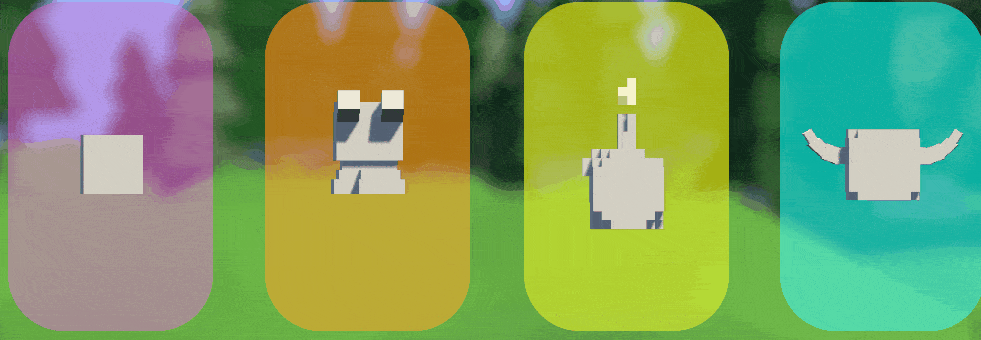
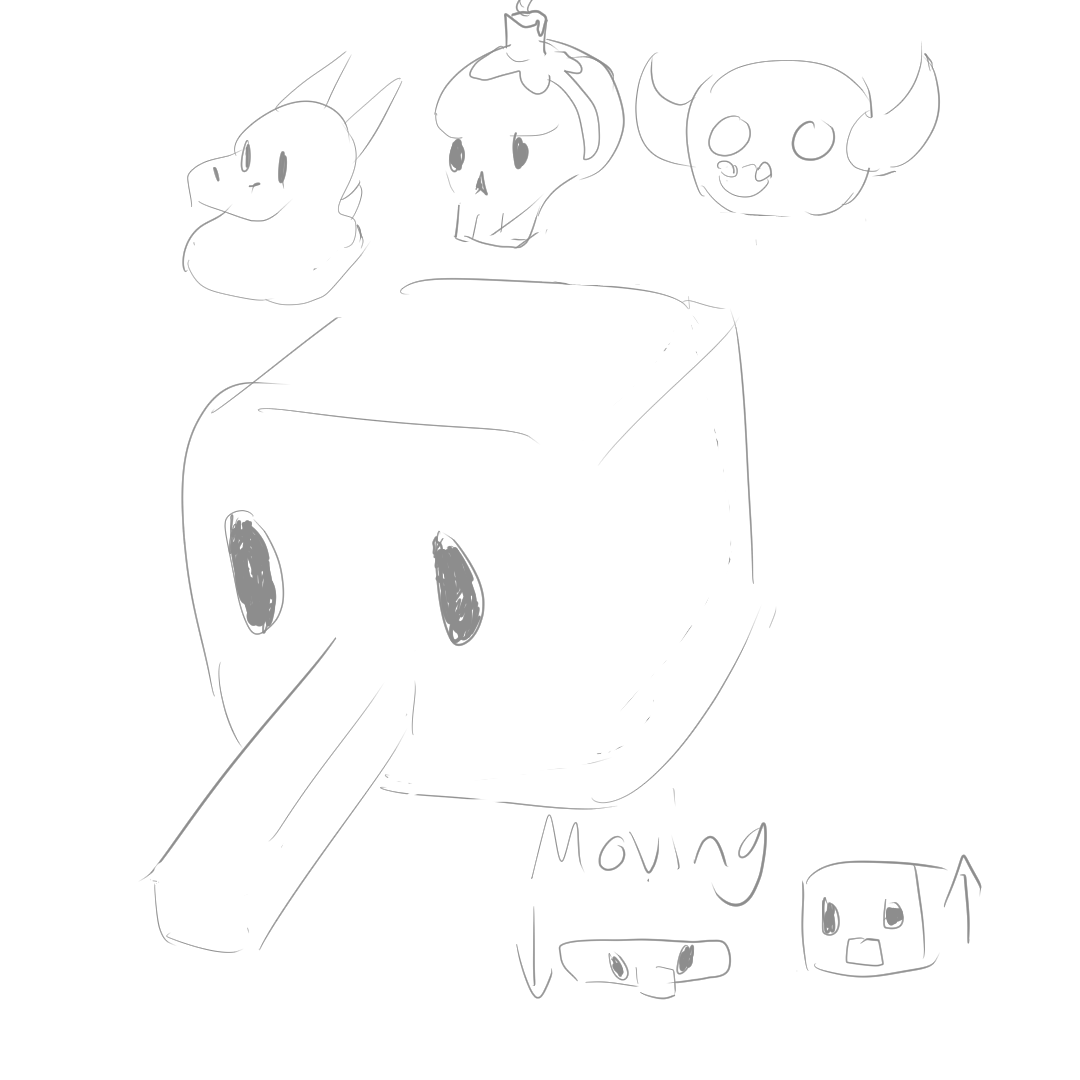
The goal of each player is to navigate one of a set number of maze based levels as they chase down the other players. Each player starts off colourless and must track down one of the colour nodes scattered across the level to become either red, green, or blue. While the nodes take some time to recharge after they are used, they can be used anytime afterwards.
A player who touches another player will knock the other out if:
- They are red and the other is green
- They are green and the other is blue
- They are blue and the other is red
- They have any colour and the other player is colourless
Along the way, power-ups of various types will drop across the level, potentially turning the tide of the game. By default, a match ends once all players but one have lost all their four lives, but a match's win condition is variable.
At completion, RGB Rumble will feature:
- Four (or more) playable characters
- Local (single device) multiplayer
- Several levels to play on
- Numerous power-ups to alter the course of a game
- Variable match settings, such as the win condition (win with the most points by a time limit, or by last-player-standing), number of lives, and time.
If I find it feasible, I will implement:
- Peer-to-peer multiplayer on a single network or over the internet (using Mirror Networking)
- Single player play against AI players
RGB Rumble will feature a top-down 2D pixel art style inspired especially by the semi-consistent art of Nitrome games.

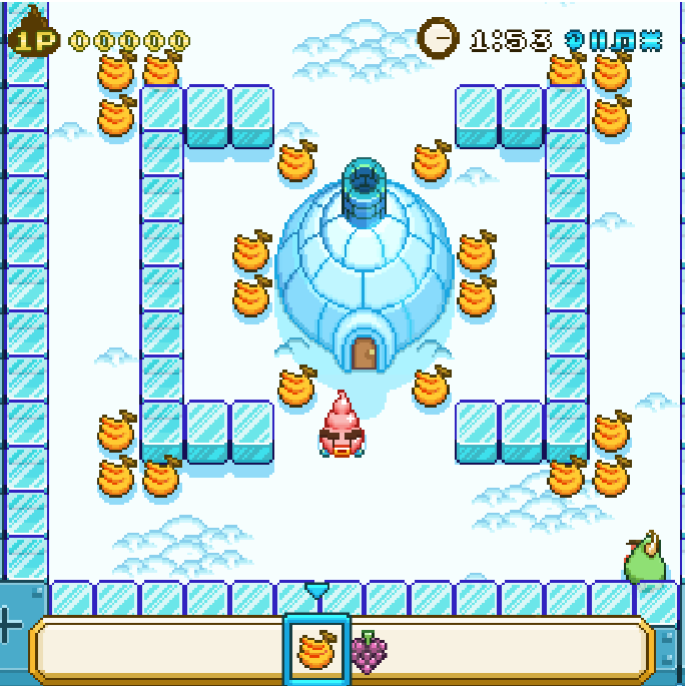

References
Bad Ice-Cream (2010). Nitrome. Available at: https://www.nitrome.com/html5-games/badicecream/ (Accessed: 29 August 2021).
Mobygames (2003) ‘Genre Definitions’, Glossary. Available at: http://www.mobygames.com/glossary/genres (Accessed: 29 August 2021).
Silly Sausage in Meat Land (2015). Nitrome. Available at: http://www.nitrome.com/games/sillysausageinmeatland/ (Accessed: 29 August 2021).
Swanson, C. (2018) Untitled multiplayer game. (Accessed: 28 August 2021).
Swanson, C. (2021) ‘RGB Rumble concept art’. (Accessed: 29 August 2021).
Tank Trouble (2007). Sublab Games. Available at: https://classic.tanktrouble.com (Accessed: 28 August 2021).
RGB Rumble
| Status | In development |
| Author | kiaric |
| Genre | Action |
More posts
- Devlog #6 - The FutureOct 17, 2021
- Game DocumentationOct 17, 2021
- Devlog #5 - Polish and UIOct 10, 2021
- Devlog #4 - Presentation and GraphicsOct 03, 2021
- Devlog #3 - Enemies and InteractionSep 26, 2021
- Devlog #2 - Basic level blockingSep 19, 2021
- Devlog #1 - Player MovementSep 12, 2021